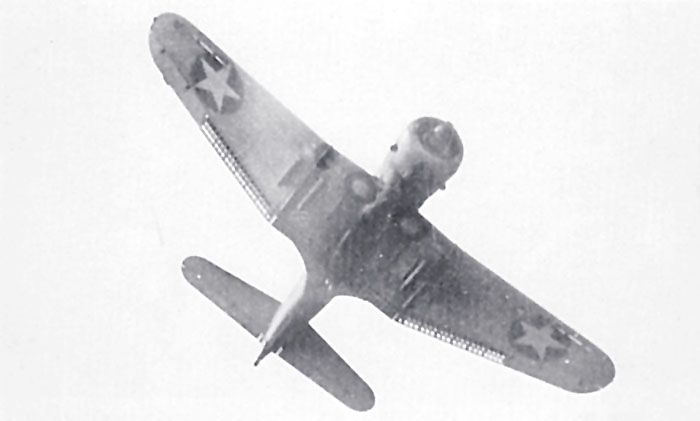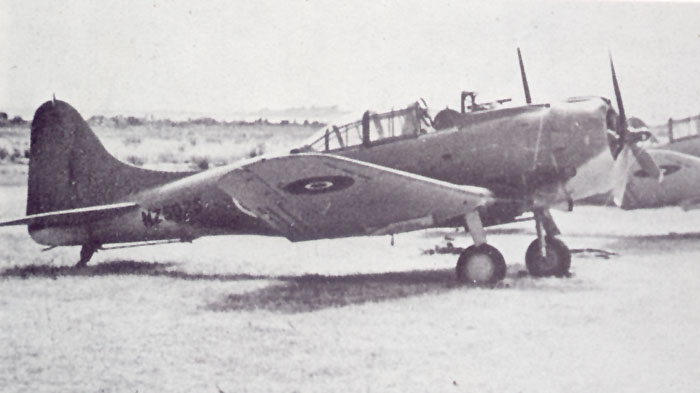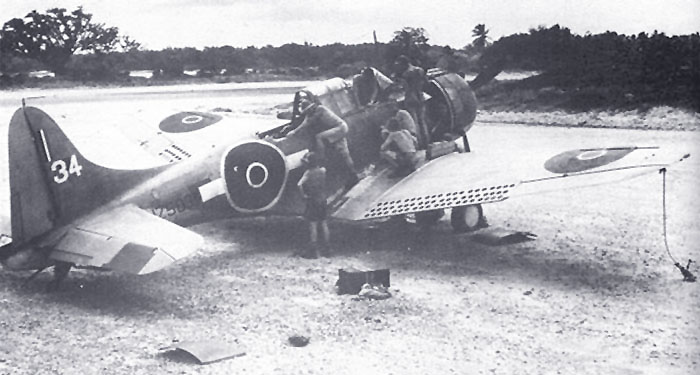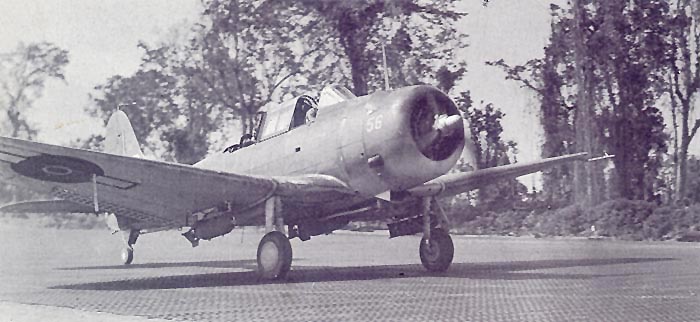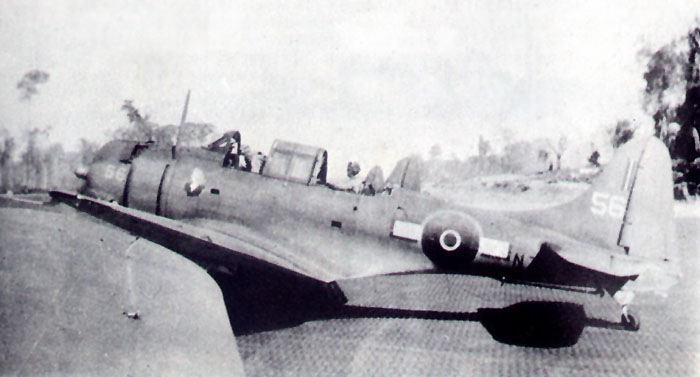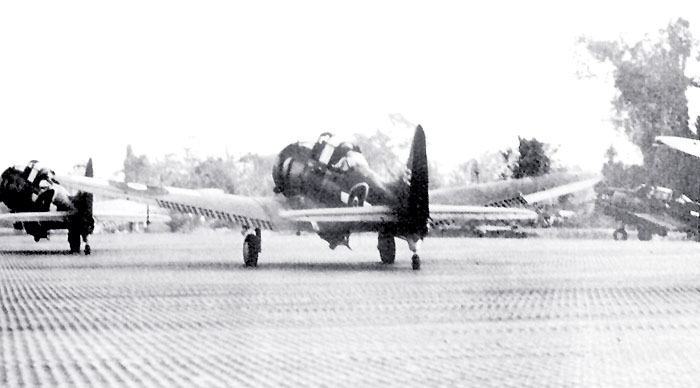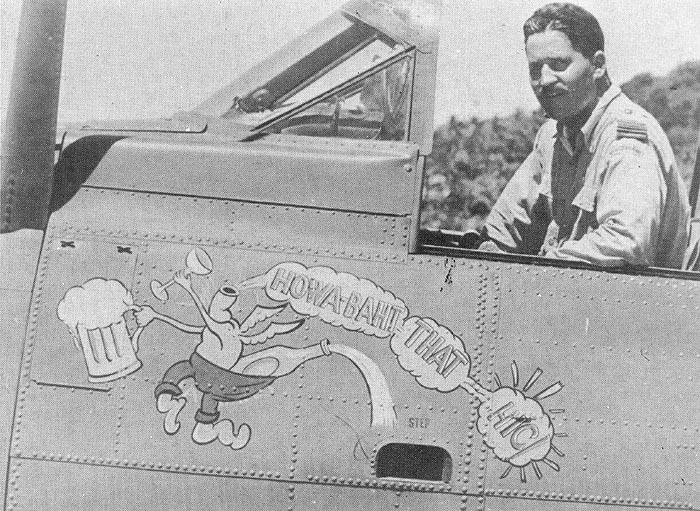| At this time, many were repainted in similar colours, but with the addition of Blue/White/Blue RNZAF roundels without White bars, in six positions. Those on the fuselage sides had a Yellow outer ring as per contemporary RAF fuselage roundels.
Fin flashes do not appear to have been added to these aircraft, but
the last number of the serial was added in White to the fin and the
nose cowl on some.
The
frequency of flying training was increased during December, and to mark
the completion of their training, a formation of 18 aircraft flew over
Auckland on the morning of January 6th, 1944. This was the largest formation
of aircraft ever seen over the city.
25 Servicing Unit was sent forward to Pallikulo on Espiritu Santo in the New Hebrides Islands to prepare SBD-4 's obtained through 'Lend-Lease' for the arrival of the aircrew and the beginning of their operational training. These Aircraft, NZ5028 - NZ5045, were also ex-USMC and were in poor condition. They were in the then current U.S.Navy 4 tone scheme of Semi-Gloss Sea Blue wing and tailplane upper surfaces, N.s.Sea Blue upper fuselage, Intermediate Blue fuselage sides and fin, and Insignia White lower wings, tailplanes and fuselage. RNZAF Blue/White/Blue roundels (Yellow outer rings and White bars on the fuselage roundels only) were painted over the 'Stars' in six positions. On
January 30th, 1944, the aircrews of 25 Squadron were flown north to
Espiritu Santo in aircraft of 40 Squadron, and began their first operational
training flights the next morning.
Many sorties were carried out including several large practice strikes along with aircraft from MAG-11, MAG-12, MAG-21, and 30 Squadron RNZAF with their Grumman TBF-1c Avengers (who were also carrying out their operational training), and escorting fighter aircraft from various Marine Air Groups. All these aircraft except for NZ5037 (which went missing on a training flight on February 11th with F/O Alexander Moore and his gunner, Flt.Sgt. John Munro aboard) were handed back to the Marines at the end of February, early March 1944, when it was realised that these SBD-4's were not suitable for operational use NOTE: NZ5037 was found in 1987, and the remains of the airframe were brought back to New Zealand. NZ5037 was displayed in a diorama at the RNZAF Museum at Wigram in Christchurch, but I now understand that it has recently been sold. (See Phillip Treweeks www.kiwiaircraftimages.com/ for photos of the display, and further notes on the RNZAF's SBD's). New
SBD-5 aircraft were then obtained from the Marine Corp stocks (NZ5046-NZ5063),
and these were operated from February 19th in their Marine markings,
but by 25th February had been repainted with RNZAF roundels in four
positions, and RNZAF serial numbers. Most also had nose
art applied at this time. All appeared to have the large pneumatic tailwheel
fitted to land based USMC aircraft.
On the morning of March 22nd, eighteen aircraft left Pallikulo for Henderson Field on Guadalcanal in the Solomon Islands. They were escorted by four PV-1 Venturas of 9 Squadron RNZAF, and a C-47 Dakota from 40 Squadron. After a five hour flight, they all landed safely except for one aircraft (NZ5055) which was forced to swerve off the runway and hit an oil drum. The aircraft had to be written off. The
next day the aircraft set off for Piva on Bougainville, where the next
morning, their first operational sorties were carried out directly on
the perimeter, due to the massive Japanese attacks on the Marine defenders
in the area. The ground crews of 25 (SU) were able to watch 'their'
aircraft take off, carry out their missions in full view, then come
in and re-arm for another strike.
|
